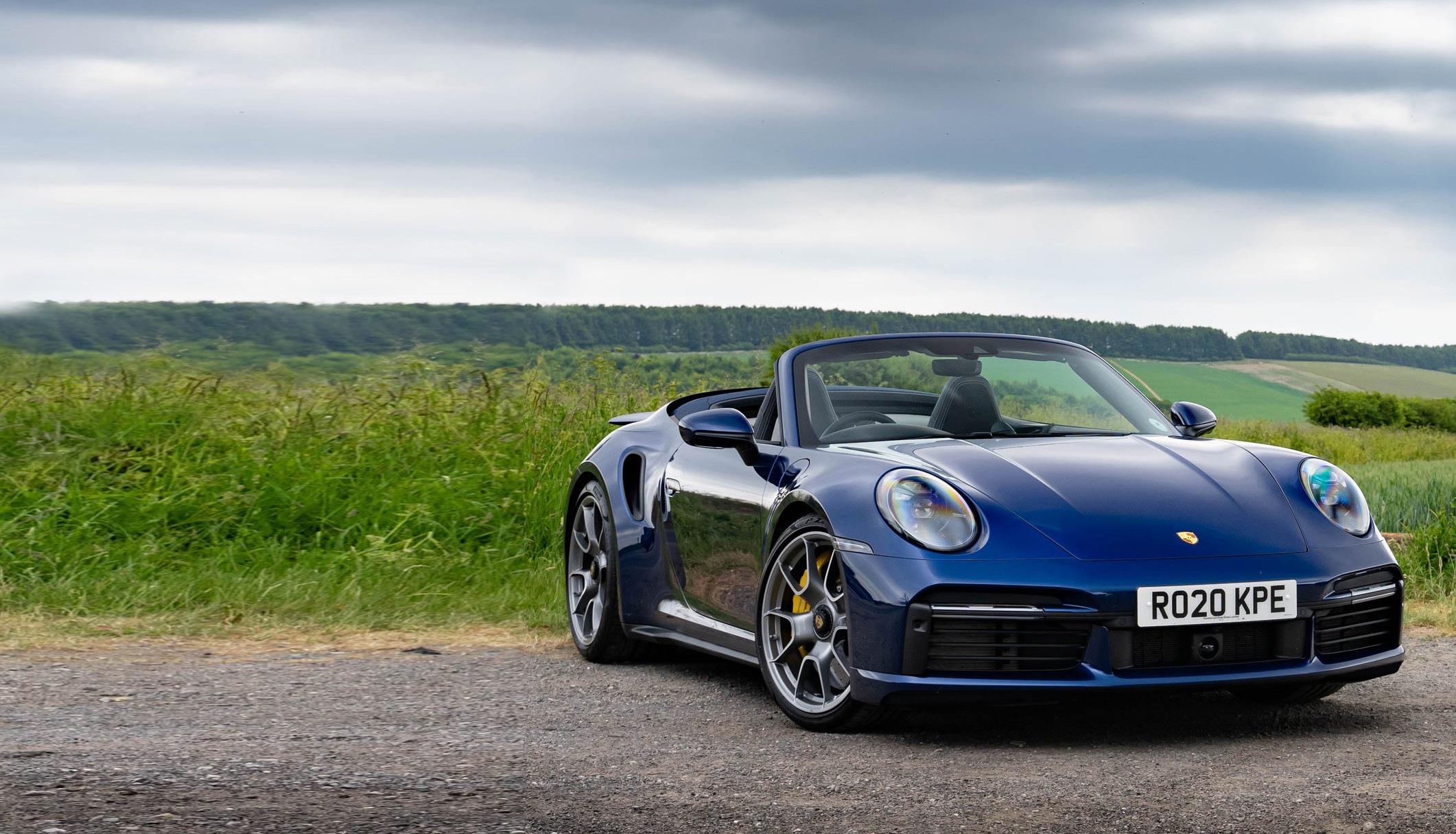FEATURE
PETROL VERSUS
ELECTRIC Darren Cassey tests the present and future of performance cars
A
sk most car enthusiasts for their propulsion method of choice and they’ll probably say petrol. This fossil fuel has powered some of the greatest engines known to man, and has fuelled engines with the power to catapult tonnes of metal to inconceivable speeds in a matter of seconds – sounding great while doing it. However, with climate change now weighing on people’s minds, the role of heavily polluting fossil fuels is quickly dying out. That means we need an alternative, and it appears electric will be the future. Porsche is at the forefront of both old- and new-school technology, epitomised by the 911 Turbo S and Taycan Turbo S. While they might not seem like natural competitors – a two-plus-two, petrolpowered sports car and an electrically powered fourdoor saloon respectively – on paper they make for an intriguing comparison. We were given the chance to test-drive both back to back, and it made for a fascinating and thoughtprovoking day. Here’s what we found… 30 | CarDealerMag.co.uk
THE FACTS AND FIGURES Let’s start with the 911 Turbo S. The Porsche 911 has long been one of the best sports cars on the market, and this newly released Turbo S version sits at the very top of the range of this latest generation. Its 3.8-litre, six-cylinder, twin-turbocharged petrol engine makes 641bhp and 800Nm of torque, with a top speed of 205mph and a 0-60mph time of 2.6 seconds. It also emits 257g of CO2 per kilometre and achieves fuel economy of 25mpg. Prices for the coupe start at about £155k, or £165k for the convertible that we tested. Meanwhile, the Taycan uses twin electric motors (one on each axle to provide all-wheel drive) that produce a combined 616bhp and 1,050Nm. With launch control engaged, that figure goes up to a scarcely believable 750bhp, contributing to an identical 0-60mph time of 2.6 seconds and a lower top speed of 161mph. It emits no CO2 and has a range of about 250 miles between charges. The Turbo S starts at £138,826, but the one we tried had been specced up to £151,210. WHICH FEELS FASTER? Both are fast enough to scramble your brains. Put your foot down in the 911 and there’s a moment’s lag as the turbos spool up and fuel is dumped into the cylinders to get the pistons firing – but once you’re away you’re really away. There’s a perceptible shift of the car’s weight to the rear and you’re catapulted towards the horizon. What’s incredible is that the higher your speeds and the further round the tachometer the needle spins, the harder the car accelerates. The first time you’ll be shocked into silence before laughing hysterically once you regain your composure. The Taycan, on the other hand, scrambles your brain in a completely different, if similarly effective, manner. Electric motors are different to petrol and diesel engines because while the last two build power with revs before tailing off, electric motors have 100 per cent of torque available from ‘zero’ RPM. They then consistently lose power as speeds get higher, hence the lower top speed. (It also has to do with the fact that electric motors work over a broader rev range than that of traditional engines so don’t need multiple gears… but that’s a story for another 1,000-word article.) The result? The Taycan and its 750bhp hit you like a freight train. The 0-60mph times might be identical but the 0-30mph is surely heavily in favour of the EV. Even with this jaded journalist’s experience of fast cars, that first couple of seconds of acceleration in a Taycan take the breath away. The difference between petrol and electric is like the
The first couple of seconds of acceleration in a Taycan take the breath away.









